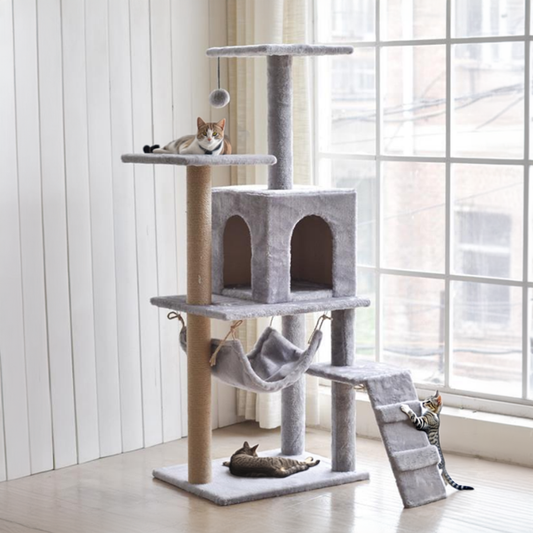Cats are fascinating creatures that go through various stages of life, each with its own unique characteristics and needs. Understanding these stages can help cat owners provide the best care and support for their feline companions. In this blog post, we will explore the seven stages of a cat's life, from kittenhood to senior years.
1. Neonatal Stage (0-2 Weeks)
During the neonatal stage, kittens are completely dependent on their mother for survival. They are born blind and deaf, relying on their sense of touch and smell to find their mother and nurse. At this stage, it's crucial to provide a warm and safe environment for the kittens and ensure they receive proper nutrition from their mother's milk.
2. Transitional Stage (2-4 Weeks)
As kittens enter the transitional stage, their eyes and ears begin to open, and they start to explore their surroundings. They become more coordinated and start to develop their social skills through play. This is also the time when they start weaning off their mother's milk and begin to eat solid food.
3. Socialization Stage (4-14 Weeks)
The socialization stage is a critical period for kittens. They learn important social skills, such as how to interact with other cats and humans. It's important to expose them to various stimuli, including different people, sounds, and environments, to ensure they grow up to be well-adjusted and friendly cats.
4. Juvenile Stage (14 Weeks - 6 Months)
During the juvenile stage, kittens continue to grow rapidly and develop their physical and cognitive abilities. They have boundless energy and curiosity, often engaging in playful antics. This is the ideal time to provide them with plenty of toys, scratching posts, and interactive activities to keep them mentally and physically stimulated.
5. Adolescent Stage (6 Months - 2 Years)
As cats enter the adolescent stage, they reach sexual maturity and may exhibit behaviors such as marking territory and becoming more independent. This is also the time when they may start to test boundaries and display some challenging behaviors. Patience and consistent training are key during this stage to establish good behavior patterns.
6. Adult Stage (2-10 Years)
The adult stage is the longest stage in a cat's life. Cats are fully matured physically and mentally, and their personalities are well-established. They are generally more settled and less prone to destructive behaviors. Regular veterinary check-ups, a balanced diet, and plenty of exercise are essential to ensure their overall health and well-being.
7. Senior Stage (10+ Years)
In the senior stage, cats start to show signs of aging, such as reduced mobility, changes in appetite, and potential health issues. They may require special diets, additional veterinary care, and a more comfortable living environment to accommodate their changing needs. Providing them with love, attention, and a stress-free environment is crucial during this stage.
Understanding the different stages of a cat's life can help cat owners anticipate their needs and provide appropriate care and support. Whether you have a playful kitten or a wise senior cat, each stage brings its own joys and challenges. By being knowledgeable and attentive, you can ensure a happy and fulfilling life for your feline companion.





